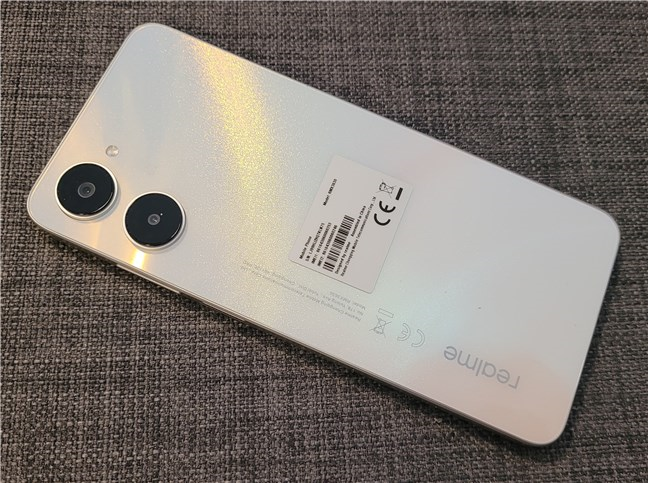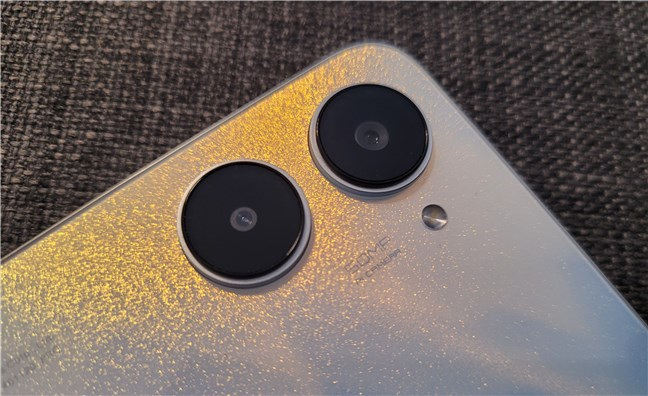
The Realme 10 is one of the latest offerings from the Chinese smartphone brand that aims to deliver high performance and build quality at an affordable price. It sports a stylish design, a stunning display, a mid-range processor, and a set of cameras that promise to be able to shoot beautiful photos and videos. Would you like to know more about it and see how the Realme 10 Android smartphone fares in real life? If you do, you should read this review:
Realme 10: Who is it good for?
The Realme 10 is an Android smartphone that you should get if:
- You want an affordable phone with good performance
- You desire a beautiful smartphone
- You’re looking for a phone with great battery life and fast charging
Pros and cons
Here’s what I like about the Realme 10:
- Bright and colorful AMOLED screen with a 90 Hz refresh rate
- Excellent performance in daily use
- Gaming is smooth on medium graphics quality settings
- Large 5000 mAh battery and outstanding autonomy
- Fast charging, and a 33W charger is bundled in the package
- Clean user interface based on Android 12, upgradable to Android 13
There are a few downsides as well:
- No ultrawide camera, and photo/video quality is average
- No certification for protection against water or dust
- Some of the bundled apps are unnecessary

Verdict
Overall, I think that the Realme 10 is a good Android smartphone that delivers what it promises. It offers good performance, a beautiful display, decent cameras, and outstanding battery life. Furthermore, you get all of that in an attractive body with an elegant design and at an affordable price point. While it might not have some advanced features or high-end specifications that other more expensive phones have, it will still provide a satisfying user experience for most people.
Unboxing the Realme 10
If you’ve had a Realme smartphone before, you’ll instantly recognize the bright yellow of the box in which the Realme 10 arrives. The black fonts and yellow background are, after all, something of a trademark for Realme. The front of the box is minimalistic, sharing only the model name, while the bottom holds details about the main features of the phone together with some of its more technical specifications.

The box of the realme 10
Unboxing the Realme 10 reveals everything you get: the smartphone, a 33W fast charger together with a detachable USB-A to C cable, a transparent silicon cover, a SIM ejection tool, and two booklets containing the user manual, warranty details, and safety information.

What's inside the box of the realme 10
The unboxing experience offered by the Realme 10 smartphone is to my liking. Unlike other manufacturers, Realme doesn’t give you just the smartphone but also a rich bundle that includes a fast charger and a protective cover for the phone.
Design and build quality
With a 6.4-inch screen, the Realme 10 is a large smartphone, measuring 159.90 mm (6.30 inches) in length and 73.30 mm (2.89 inches) in width. Still, it’s slim and lightweight, with a thickness of 8 millimeters (0.31 inches) and a weight of just 178 grams (6.28 oz). Given its dimensions, this smartphone might be tricky to use with just one hand unless you have long fingers. However, if you’ve already come to terms with owning a large phone, you’ll probably like the svelteness of the Realme 10.

The Realme 10 is a 6.4" Android smartphone
The model I received in testing was the Clash White version. Its back features a shade of white filled with shimmering colors that sometimes look like sparkling dots, while other times, they give out gradients of light. I must say that it looks beautiful and almost made me give in to the temptation of not using the silicon cover bundled in the packaging. There’s also another color version for the Realme 10, called Rush Black, that appears to look just as great as the white one.

The color options for the Realme 10
Realme 10’s front is covered by Gorilla Glass 5 and is filled almost entirely by the large screen, which, thanks to its AMOLED panel, looks great both in terms of color and brightness. The bezels surrounding the screen are rounded on the corners, and they’re also slim, except for the bottom one, which is slightly thicker. The only thing that breaks the symmetry is a tiny hole in the top-left corner of the display, where the selfie camera resides.

Realme 10 sports a Super AMOLED display
The edges of the Realme 10 are slightly angled, falling onto the frame that appears to be made of plastic materials, just like the back cover of the phone. The grip is good, though, and the edges look quite solid. On the bottom, you’ll find the USB-C port, the loudspeaker to the right, the main microphone, and a 3.5 mm audio jack to the left.

There's a 3.5 mm audio jack on the Realme 10
The left edge houses the SIM and MicroSD cards tray, while on the top edge, there’s nothing except for the auxiliary microphone.

Realme 10 has a three-slot SIM tray
The power button, which also acts as a fingerprint reader, and the volume rocker are all located on the right edge of the Realme 10, towards the top.

The fingerprint reader is built into the power button
The main camera system on the rear side of the smartphone is made of two large round camera housings and a small LED flash. I love the ring-like design of the cameras, as it feels both professional and simple. The cameras stand out not just in the figurative sense but also in the physical, objective one. Unless you put the smartphone inside a case, it will wobble on any plane surface you place it on.

The rear cameras are inside protruding rings
I like the overall look of the Realme 10, as its outward appearance indicates both beauty and a semblance of order and simplicity. The build quality seems good too, and the smartphone feels well-made. The only thing I can complain about is that the company didn’t certify the Realme 10 for resistance against water or dust, so care is advised in this regard.
Hardware specifications
The Realme 10 is powered by a mid-range Helio G99 chipset made by MediaTek. This is a 4G SoC (System on a Chip), built on a thin 6 nm manufacturing process, that incorporates an octa-core processor (two 2.20 GHz Cortex-A76 cores and six 2.00 GHz Cortex-A55 cores) and a Mali-G57 MC2 graphics unit. Regarding memory, the smartphone is sold in various configurations with 4, 6, or 8 GB of RAM. Storage-wise, you can get the phone with 64, 128, or 256 GB of UFS 2.2 internal flash memory. The Realme 10 sample that I’m reviewing is equipped with 8 GB of RAM and 128 GB of storage.

Realme 10 is powered by a Helio G99 processor
Out of the full 128 GB of storage, roughly 107 GB are free to use. The rest (21 GB) is taken by the operating system and default apps. Fortunately, you can also expand the available storage space by adding a MicroSD card. By the way, although the Realme 10 is a dual SIM smartphone that accepts two nano-SIM cards, the storage card has its dedicated slot on the SIM tray.

The SIM and MicroSD card tray
Realme 10’s screen is based on a Super AMOLED panel with a 6.4-inch size, an aspect ratio of 20:9, and a resolution of 1080 by 2400 pixels. That translates into an excellent ppi density of 411 pixels per inch. Moreover, it also offers a high refresh rate of 90 Hz and a peak brightness of 1000 nits (candela per square meter). The display is protected by high-quality Corning Gorilla Glass 5.

The display supports a refresh rate of 90 Hz
In terms of cameras, the Realme 10 offers a dual-camera setup on its rear as well as a front camera:
- The main (wide) camera has a 50-megapixel sensor, an aperture of f/1.8, and support for phase-detection autofocus (PDAF).
- The secondary rear camera is a depth camera with 2 megapixels and an f/2.4 aperture.
- On the front, the selfie camera uses a 16-megapixels sensor with an aperture of f/2.5.
Both the front and back cameras support HDR and panorama mode, and both can record video in up to 1080p resolution. The rear one can do it at 30 or 60 frames per second, but the front one is limited to only 30 frames per second. The rear cameras are also backed by an LED flash. Sadly, the smartphone doesn’t offer support for higher video resolutions, nor does it offer OIS (Optical Image Stabilization).

The main camera has a 50-megapixel sensor
Regarding network compatibility, you might want to know that Realme 10 supports dual-band Wi-Fi 5 on the 2.4 and 5 GHz bands but isn’t compatible with Wi-Fi 6. It also offers Bluetooth 5.3 and, depending on the region you get the smartphone, NFC. As for sensors, besides the fingerprint reader built into the power button, the Realme 10 also includes an accelerometer, a proximity sensor, a compass, and a gyroscope.
Powering the Realme 10 is a non-removable Li-Po accumulator with a capacity of 5000 mAh. It’s a large battery that should keep the smartphone running for more than a day. Moreover, the phone also supports fast charging, and the bundled charger can deliver 33W, which the company promises will take the battery from 0 to 50% in 28 minutes.
If you’d like to get into detail about all the features and technical specifications, check out Realme 10’s official webpage.
Access the next page of this review to read more about the user experience offered by the Realme 10, the quality of its cameras, its performance in benchmarks, and the software you get with this smartphone.


 30.03.2023
30.03.2023 


